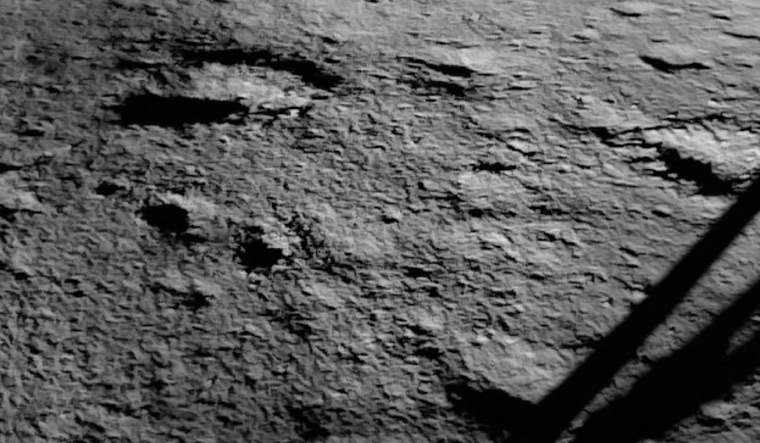Hours after the Chandrayaan-3 mission's Lander 'Vikram' had a successful soft landing on the moon, the Rover 'Pragyan' rolled out of the module to undertake in-situ scientific experiments on the lunar surface. The Rover will explore the lunar surface for 14 days or one lunar day.
According to the ISRO, the Lander and the Rover have five scientific payloads that have been placed inside the Lander Module (LM). Rover's payloads include Alpha Particle X-Ray Spectrometer (APXS) and Laser Induced Breakdown Spectroscope (LIBS). While APXS will be used to derive the chemical composition and infer mineralogical composition to further enhance the understanding of the lunar surface, LIBS will determine the elemental composition of the lunar soil and rocks around the Moon's landing site. "The deployment of Rover to carry out in-situ scientific experiments would scale new heights in lunar expeditions," ISRO said.
The Lander Payloads are RAMBHA-LP (Langmuir Probe), to measure the near-surface plasma (ions and electrons) density and its changes with time and ChaSTE Chandra's Surface Thermo Physical Experiment that will carry out the measurements of thermal properties of the lunar surface near-polar region. The Instrument for Lunar Seismic Activity (ILSA) will measure the seismicity around the landing site and delineate the structure of the lunar crust and mantle.
Meanwhile, the images released by Vikram lander upon touchdown show it choosing a relatively flat region on the Moon's surface for soft-landing.
Chandrayaan-3 Mission:
— ISRO (@isro) August 23, 2023
Updates:
The communication link is established between the Ch-3 Lander and MOX-ISTRAC, Bengaluru.
Here are the images from the Lander Horizontal Velocity Camera taken during the descent. #Chandrayaan_3#Ch3 pic.twitter.com/ctjpxZmbom
The images captured by the Landing Imager Camera after the landing showed a portion of Chandrayaan-3's landing site. "Seen also is a leg and its accompanying shadow," ISRO noted. "Chandrayaan-3 chose a relatively flat region on the lunar surface," the space agency said.
The agency added that a communication link was established between the lander and the space agency's Mission Operations Complex (MOX) here. The MOX is located at the ISRO Telemetry, Tracking and Command Network (ISTRAC).
Chandrayaan-3 touched down on the lunar south pole at 6.04 pm on Wednesday, making India the first country to land on the uncharted surface. With this touchdown, India also became the fourth country to master the technology of soft landing on the Moon after the US, China and the erstwhile Soviet Union.
But no country has ever landed on the treacherous south pole that scientists believe could hold important reserves of frozen water and precious elements. Russia's south pole-bound Luna-25 spacecraft crashed into the Moon on Sunday after spinning out of control.


